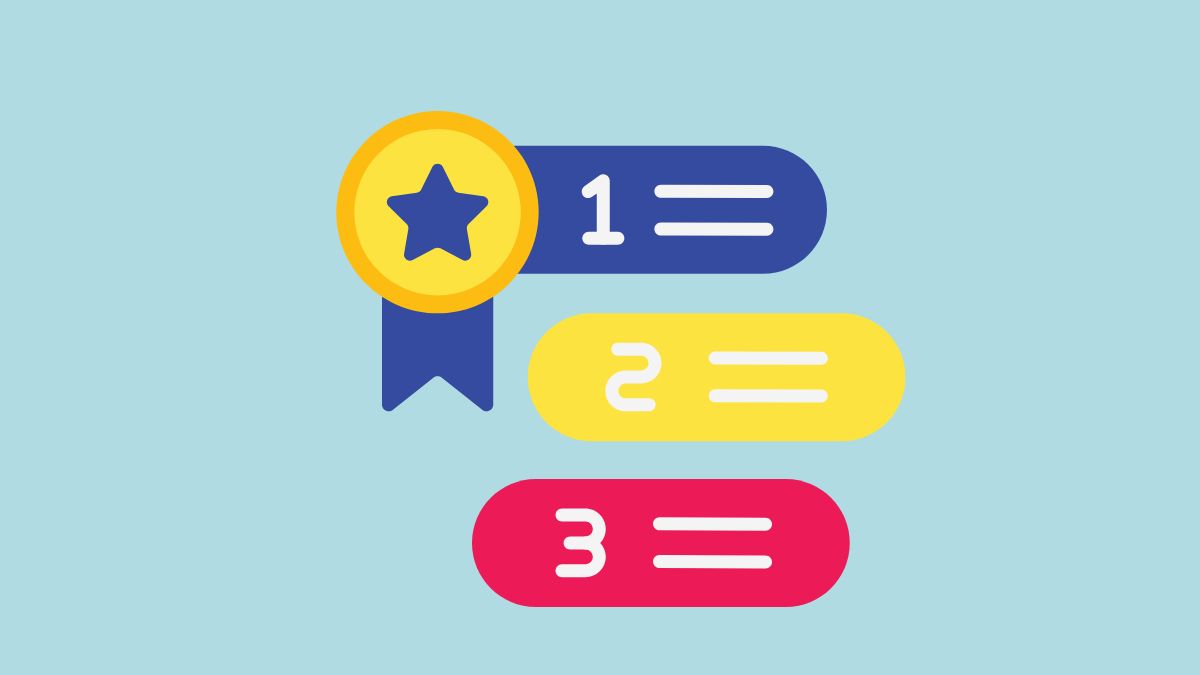Table of Contents
- Introduction
- Why Are Journal Rankings Important?
- Major Ranking Systems: Scopus, Web of Science, and Beyond
- Ranking Methodologies: What Metrics Do These Systems Use?
- Impact Factor (IF) and Journal Impact Factor (JIF)
- Institutional Rankings and Influence
- Criticisms and Challenges in Journal Rankings
- The Future of Journal Rankings
- Practical Tips for Navigating Journal Rankings
- Conclusion
Introduction
Academic journals are vital in disseminating knowledge across various disciplines, from medicine to the humanities. These journals serve as a primary platform for researchers to publish their findings and for academic communities, institutions, and policymakers to access new information. However, with tens of thousands of journals available, how can one assess the quality or impact of a particular journal? How are academic journals ranked?
This is where journal rankings come in.
Rankings offer metrics and categorizations that reflect a journal’s quality, reputation, and influence within its field. Two of the most prominent databases that rank academic journals are Scopus and Web of Science. Additionally, institutional rankings and other independent metrics, like Google Scholar Metrics, provide further layers of evaluation.
Each system employs its methodology, weighing factors like citation counts, impact factors, and journal prestige differently. Let’s delve into how these ranking systems work, their use criteria, and how academic journals are ultimately ranked.
Why Are Journal Rankings Important?
Journal rankings hold significant influence within the academic and research community. Here’s why they matter:
- Career Advancement: Researchers must often publish in high-ranking and reputable journals to progress in academia. Publications in well-ranked journals carry more weight during tenure and promotion evaluations.
- Research Funding: Funding bodies and grant committees frequently consider where applicants have published, with higher-ranked journals reflecting well on the applicant.
- Academic Influence: Journal rankings often indicate the reach and influence of a researcher’s work. Articles in highly ranked journals are more likely to be cited, amplifying the researcher’s academic impact.
While journal rankings are undeniably important, they’re not without their criticisms. Some argue that they emphasize citations over the quality of research, while others note that ranking systems may favor certain disciplines or geographical regions over others. Despite these debates, rankings remain a fixture in academia.
Major Ranking Systems: Scopus, Web of Science, and Beyond
Ranking systems differ widely in their criteria and evaluation methods. Below, we’ll examine how Scopus, Web of Science, and other major systems rank academic journals.
Scopus
Scopus, managed by the global information analytics company Elsevier, is one of today’s largest abstract and citation databases. It evaluates journals based on various metrics, primarily focusing on citations. Here’s a closer look at some of Scopus’s main ranking tools:
- CiteScore: Introduced in 2016, CiteScore measures the average number of citations received per document published in a journal over the previous four years. It’s calculated by dividing the total number of citations by the number of documents published in that period.
- SCImago Journal Rank (SJR): SJR is a measure of a journal’s prestige, developed in collaboration with Scopus. It accounts for the number of citations a journal receives and the prestige of the citing journals. SJR considers citations from higher-ranking journals to be more influential.
- Source Normalized Impact per Paper (SNIP): SNIP adjusts for differences in citation practices across fields, making comparing journals from different disciplines easier. It emphasizes contextual citation impact by accounting for citation potential in a journal’s field.
These metrics create a multi-dimensional profile of each journal’s influence, catering to quantity (total citations) and quality (prestige and field normalization).
Web of Science
Web of Science (WoS), owned by Clarivate, is another prominent citation database that ranks journals based on the Journal Impact Factor (JIF), one of academia’s oldest and most widely recognized ranking metrics. Here’s how WoS evaluates journals:
- Journal Impact Factor (JIF): The JIF calculates a journal’s average number of citations over two years. By dividing the number of citations by the number of published articles, the JIF offers an average citation count per paper, emphasizing citation quantity.
- Journal Citation Indicator (JCI): The JCI, introduced recently, provides a normalized citation impact score, allowing cross-disciplinary comparisons by weighing citations based on the average citations in each subject area.
- Eigenfactor Score: Eigenfactor considers the impact of both citations and the importance of the source journal. Citations from higher-ranked journals are weighted more heavily, similar to Scopus’s SJR metric. Unlike the JIF, which measures average citations per article, the Eigenfactor Score reflects a journal’s total influence based on all articles published.
These metrics from the Web of Science focus on the quality and quantity of citations, creating a ranking system that is especially useful for gauging a journal’s broader impact.
Google Scholar Metrics and Other Rankings
While Scopus and Web of Science dominate, Google Scholar Metrics and independent ranking lists like The Academic Journal Guide (AJG) and Science Citation Index provide valuable insights. Google Scholar Metrics, for instance, uses the h5-index, which reflects the largest number of articles in a journal with at least that number of citations within five years. Google Scholar’s open-access model offers a more democratic ranking system but lacks extensive curation in Scopus and Web of Science.
Ranking Methodologies: What Metrics Do These Systems Use?
Several key metrics can influence a journal’s rank, each with advantages and limitations. Let’s examine these metrics and how they shape the ranking landscape.
Impact Factor (IF) and Journal Impact Factor (JIF)
The Journal Impact Factor (JIF) is one of the most traditional metrics for ranking journals. Calculated over a two-year window, the JIF provides a straightforward citation count for each article published within a journal. While widely used, the JIF has some limitations:
- Disciplinary Bias: Certain fields, like medicine or life sciences, have higher citation rates, inflating JIFs in those areas.
- Short-Term Focus: JIF’s two-year citation window can disadvantage journals with longer-lasting impacts but slower citation rates, which are common in fields like the humanities.
- Susceptibility to Citation Manipulation: Practices like self-citation or citation stacking (where journals cite each other to inflate scores) can skew JIF results.
CiteScore
CiteScore, used by Scopus, addresses some of the JIF’s criticisms by extending its citation window to four years. This longer citation period benefits journals in slower-moving fields and provides a broader view of a journal’s impact. However, CiteScore still heavily favors journals with high citation counts, which may not always correlate with research quality.
h-Index and h5-Index
The h-index, initially developed to rank individual researchers, has also been adapted to rank journals. Google Scholar’s h5-index, for example, ranks journals based on the number of articles with at least that number of citations in the past five years.
- Advantages: The h-index rewards productivity and impact, giving equal weight to prolific and impactful journals.
- Drawbacks: However, it can also be limited by the tendency of high-citation fields to dominate, making interdisciplinary comparisons challenging.
SNIP and Eigenfactor
- Source Normalized Impact per Paper (SNIP): By adjusting for citation frequency within a field, SNIP makes comparing journals from different disciplines easier. This allows for a more balanced view of journals with different citation cultures.
- Eigenfactor: Eigenfactor emphasizes the number of citations and the quality of those citations, providing a measure of influence. Eigenfactor’s network analysis method assigns a higher weight to citations from more influential journals, making it useful for distinguishing journals with high citation quality.
Institutional Rankings and Influence
Many institutions and national research agencies also create journal rankings. These often reflect regional standards and specific research agendas, adding another layer to journal evaluation. Examples include:
- Australian Research Council’s ERA Journal List: This ranking categorizes journals into tiers based on research quality and contribution to academic fields within Australia.
- China’s CSSCI: The Chinese Social Sciences Citation Index (CSSCI) focuses on Chinese social sciences and humanities journals, showcasing highly cited and locally impactful research.
While these lists may not be as globally recognized as Scopus or Web of Science, they hold considerable influence within their respective regions. Researchers in these countries may prioritize journals included in these rankings, as they often impact funding and career advancement.
Criticisms and Challenges in Journal Rankings
While ranking systems help researchers, institutions, and publishers assess journal quality, they are not without controversy. Here are some common critiques:
- Field Bias: As mentioned, certain disciplines naturally attract more citations than others, leading to higher scores for journals in fields like medicine, whereas niche or slower-moving fields may be undervalued.
- Focus on Citations Over Quality: Rankings often rely on citation counts, which don’t necessarily reflect research quality. Highly cited papers aren’t always the most rigorous or influential within their fields.
- Regional Disparities: English-language journals, especially those from the U.S. and Europe, often dominate rankings, which can marginalize research from other regions.
- Pressure on Researchers: The “publish or perish” culture can drive researchers to prioritize quantity over quality, sometimes publishing in multiple high-ranking journals to meet institutional demands rather than to contribute meaningful research.
These challenges highlight the need for a balanced view of journal rankings and their application, emphasizing the importance of interpreting rankings in context.
The Future of Journal Rankings
The landscape of journal rankings is continually evolving as new technologies and priorities shape the field. Here are some trends likely to impact the future of journal rankings:
- Open Access and Public Engagement: As open-access publishing grows, rankings may begin to reflect accessibility metrics, assessing a journal’s public reach and engagement alongside traditional academic influence.
- Alternative Metrics (Altmetrics): Altmetrics tracks online mentions, social media shares, and other forms of digital engagement. As scholarly communication extends beyond traditional citations, altmetrics may gain traction in ranking journals, reflecting broader public and interdisciplinary impact.
- More Comprehensive Evaluation Tools: Databases like Dimensions and ResearchGate are developing new ways to assess journal impact, such as tracking collaborations or public engagement. This could lead to ranking systems that capture more qualitative aspects of research, like societal impact.
Practical Tips for Navigating Journal Rankings
For researchers, understanding journal rankings is crucial when choosing where to publish. Here are some tips to consider:

- Balance Quantity and Quality: While citations matter, prioritize journals known for rigorous peer review and scholarly impact. Publishing fewer papers in top-quality journals can be more beneficial than publishing many in lower-ranking ones.
- Consider Your Field: Rankings vary widely by discipline. Choose journals with high rankings specific to your research area rather than relying only on general rankings.
- Think Long-Term: Short-term rankings can fluctuate, so focus on journals with established reputations for consistent quality.
Conclusion
In conclusion, academic journal rankings provide a structured yet complex view of journal influence and quality. By understanding the strengths and limitations of systems like Scopus, Web of Science, and regional rankings, researchers, and institutions can make more informed decisions that reflect academic prestige and scholarly work’s real-world impact.
